TGF-β/Smad Signaling
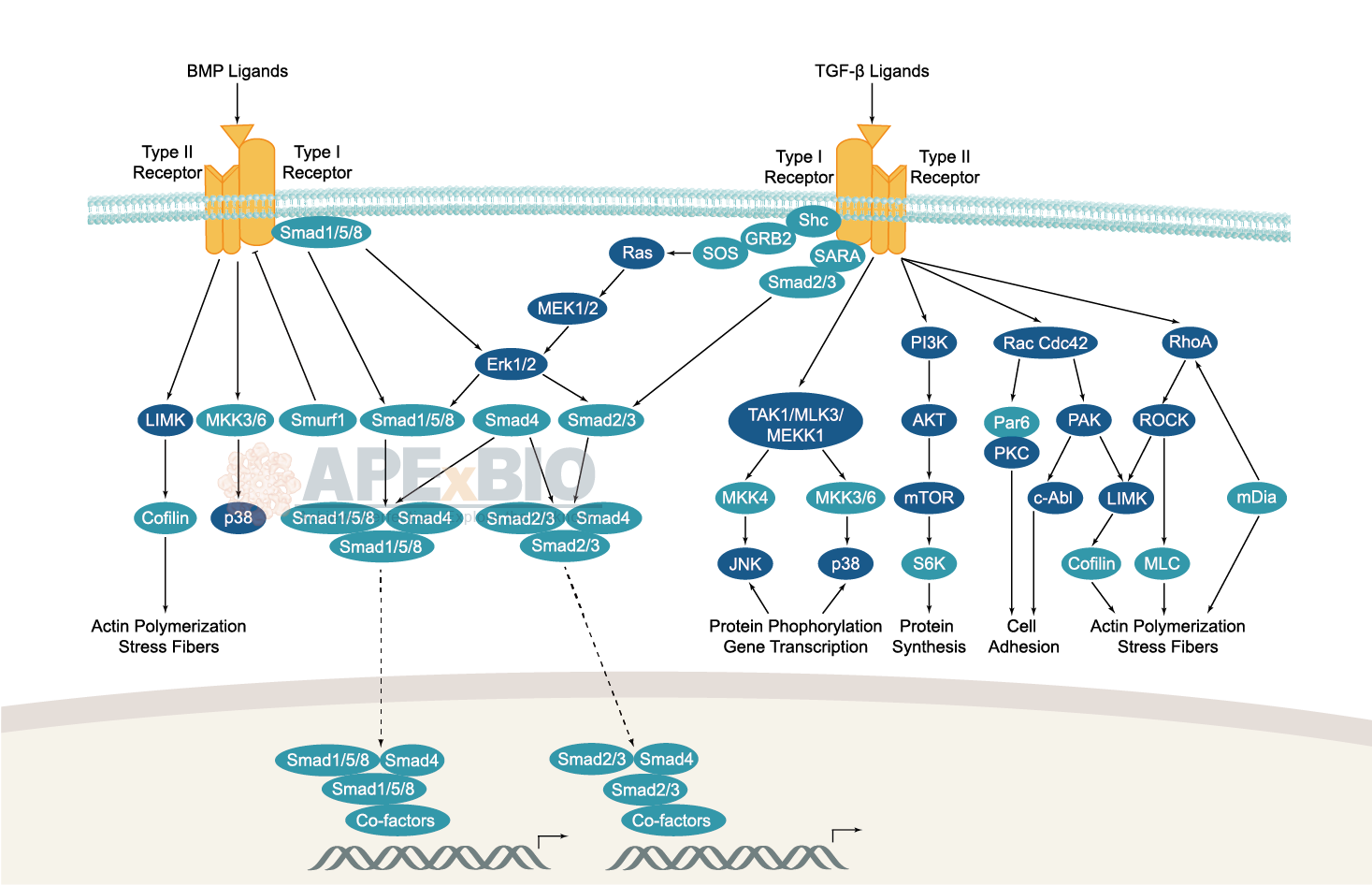

The TGF-β family is generally classified into two sub-families, TGF-β ligands, and bone morphogenic protein (BMP) ligands. In canonical signaling, receptor activation lead to phosphorylation of a group of transcription factors called Smads. TGF-β ligands bind to type II receptors (TGF-β II) which recruit and phosphorylate type I receptor (TGF-β I) on serine/threonine residues. The TGF-β I then recruits and phosphorylates a receptor regulated Smad (R-Smad). The R-Smad binds to the common Smad (Co-Smad) and forms a heterodimeric complex. This complex then translocates into the cell nucleus where it binds with nuclear co-factors to regulate the transcription of various target genes. Dysregulation of TGF-β/Smad signaling pathway is associated with a number of pathological conditions including fibrosis, cancer, immunodeficiency, diabetes and cardiovascular diseases etc.
-
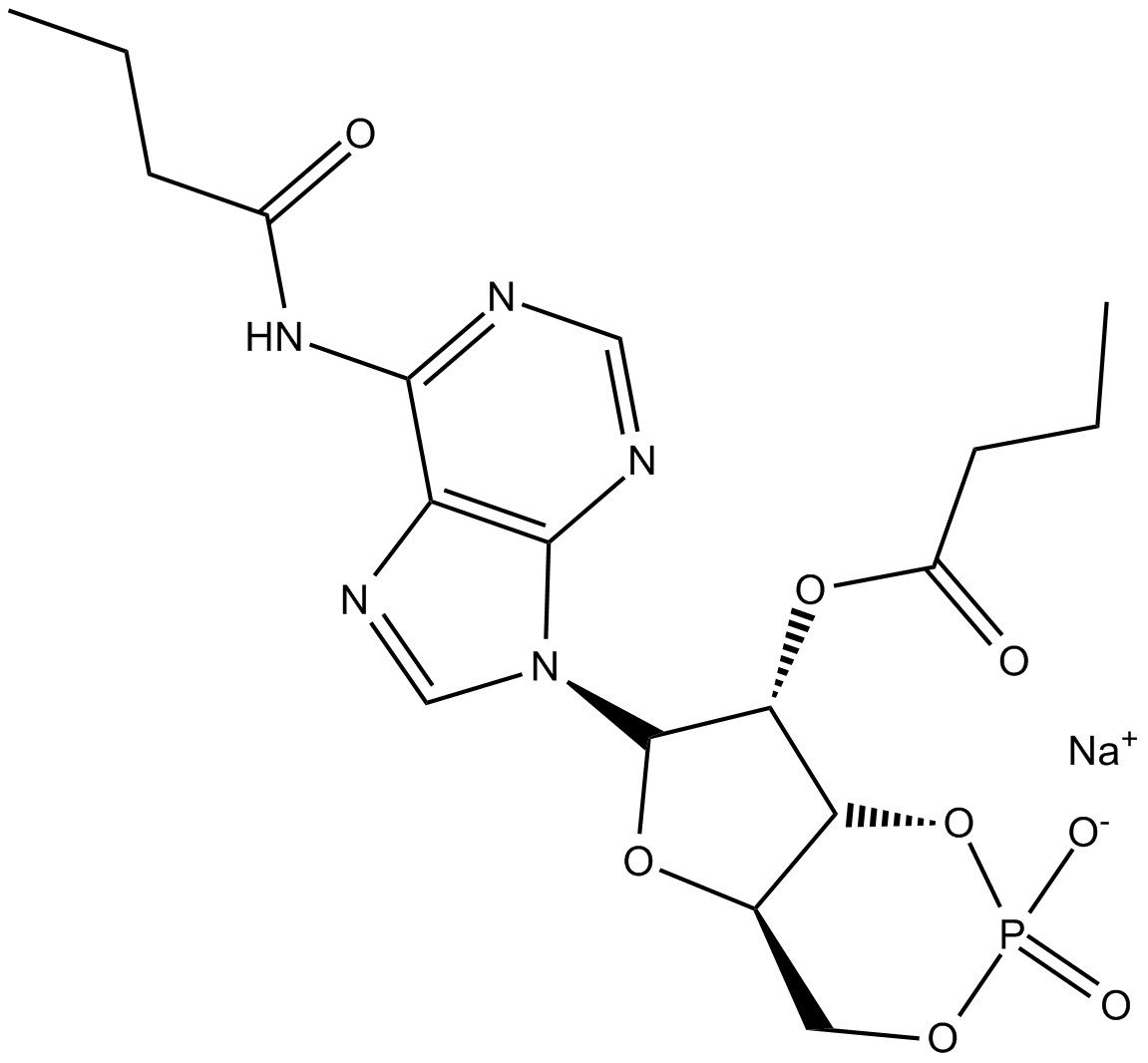 B9001 Dibutyryl-cAMP, sodium salt8 CitationSummary: cell-permeable cAMP analog
B9001 Dibutyryl-cAMP, sodium salt8 CitationSummary: cell-permeable cAMP analog -
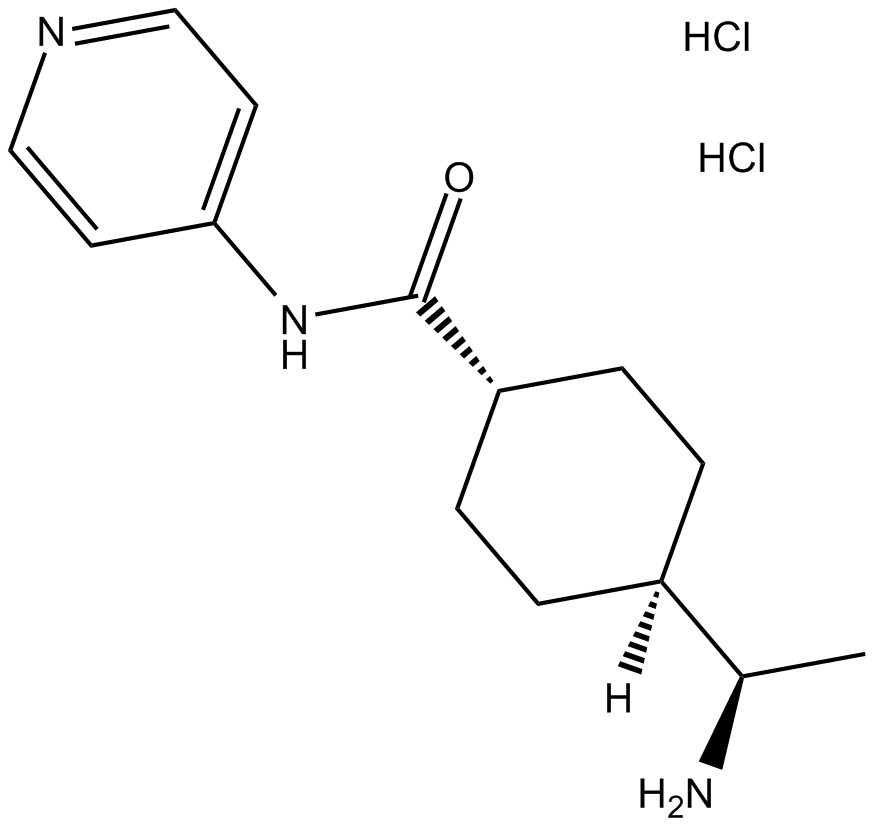 A3008 Y-27632 dihydrochloride68 CitationTarget: ROCKSummary: ROCK inhibitor
A3008 Y-27632 dihydrochloride68 CitationTarget: ROCKSummary: ROCK inhibitor -
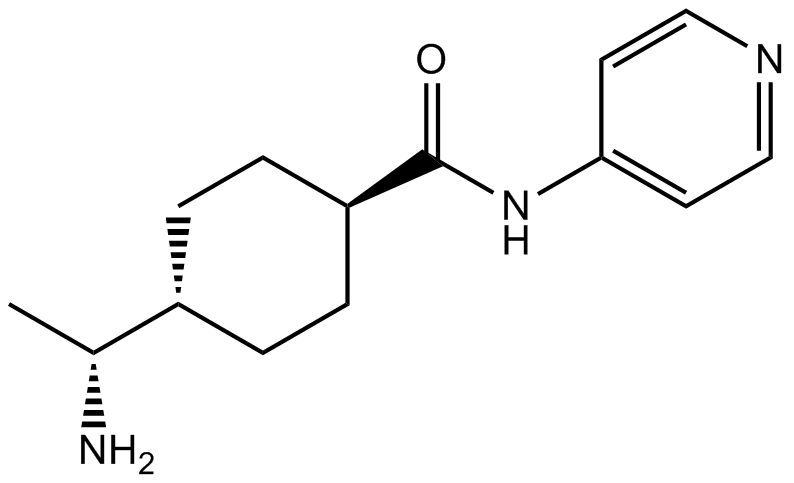 B1293 Y-2763239 CitationTarget: ROCKSummary: ROCK inhibitor
B1293 Y-2763239 CitationTarget: ROCKSummary: ROCK inhibitor -
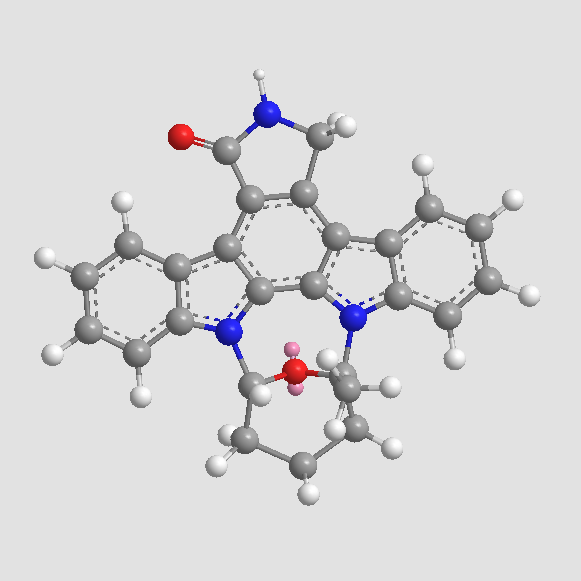 A8192 Staurosporine20 CitationSummary: serine/threonine protein kinases inhibitor
A8192 Staurosporine20 CitationSummary: serine/threonine protein kinases inhibitor -
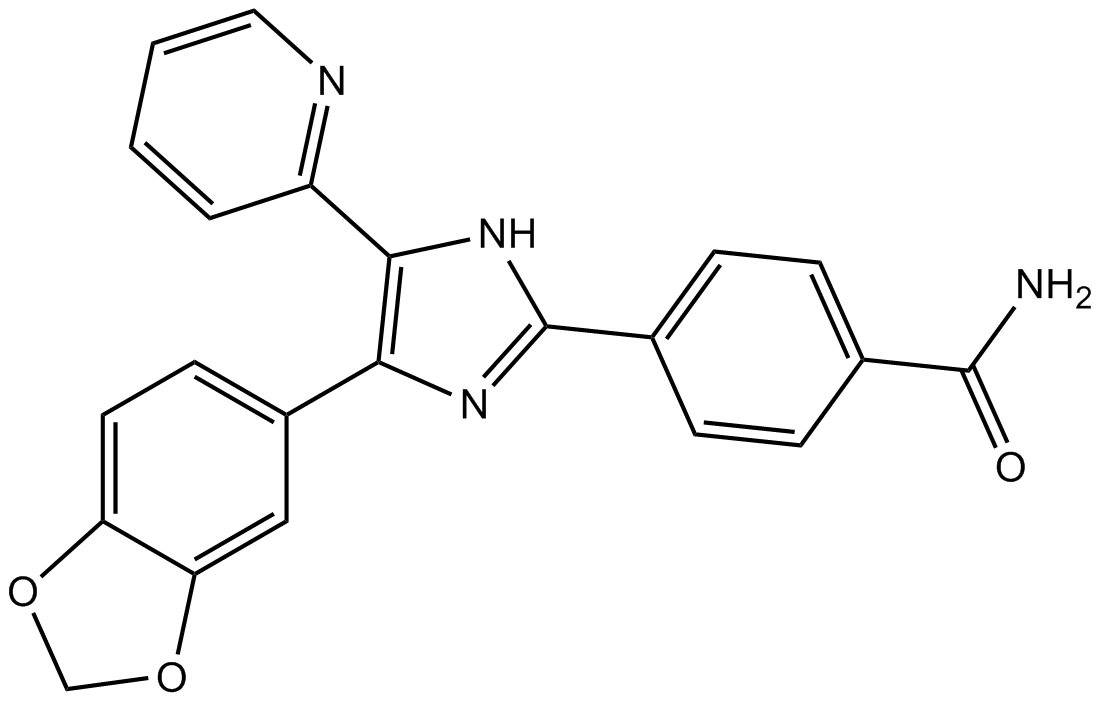 A8249 SB 43154228 CitationSummary: ALK5 inhibitor
A8249 SB 43154228 CitationSummary: ALK5 inhibitor -
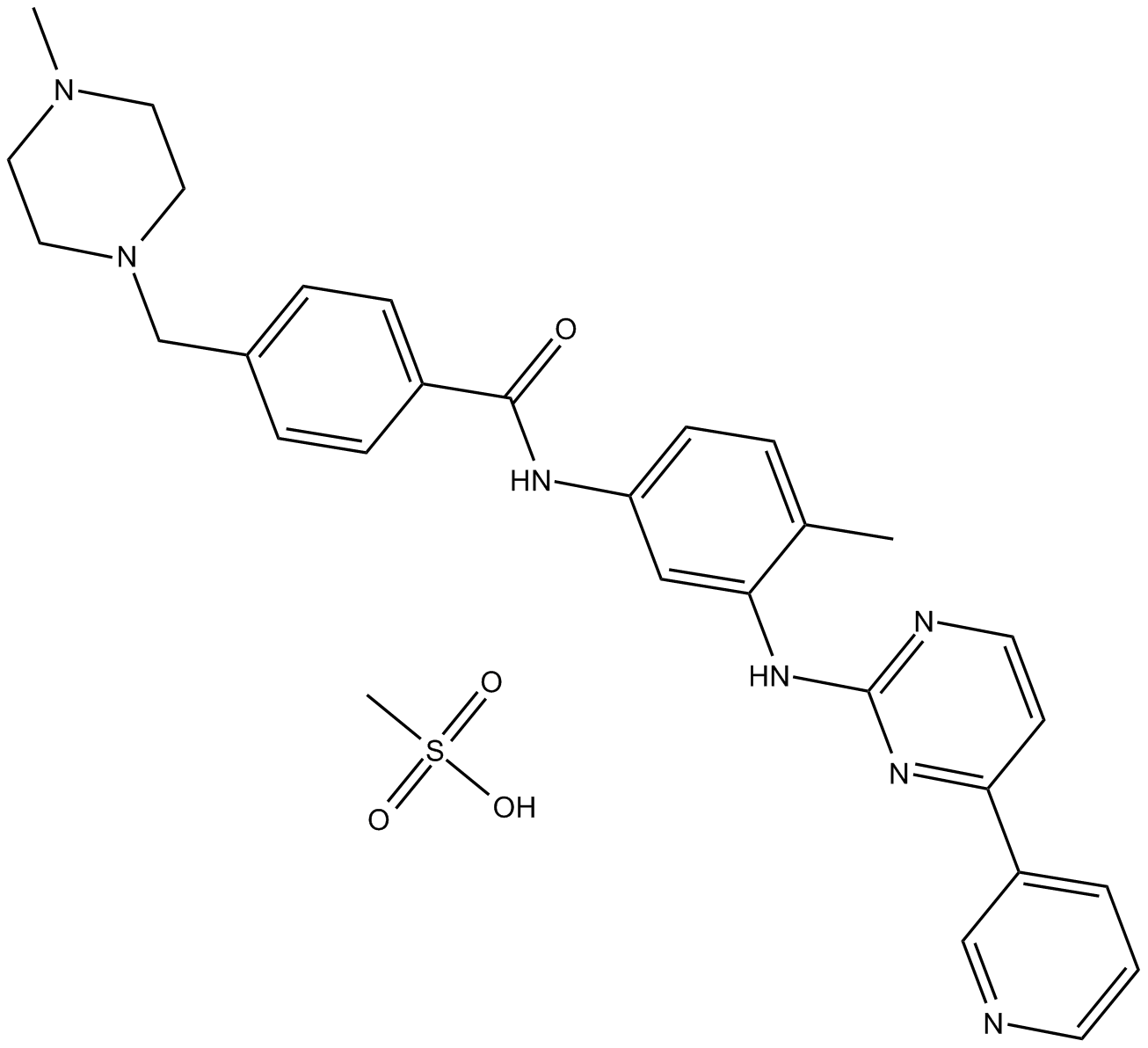 A1805 Imatinib Mesylate (STI571)2 CitationTarget: PDGFR|c-Kit|Bcr-AblSummary: Abl/c-kit/PDGFR inhibitor
A1805 Imatinib Mesylate (STI571)2 CitationTarget: PDGFR|c-Kit|Bcr-AblSummary: Abl/c-kit/PDGFR inhibitor -
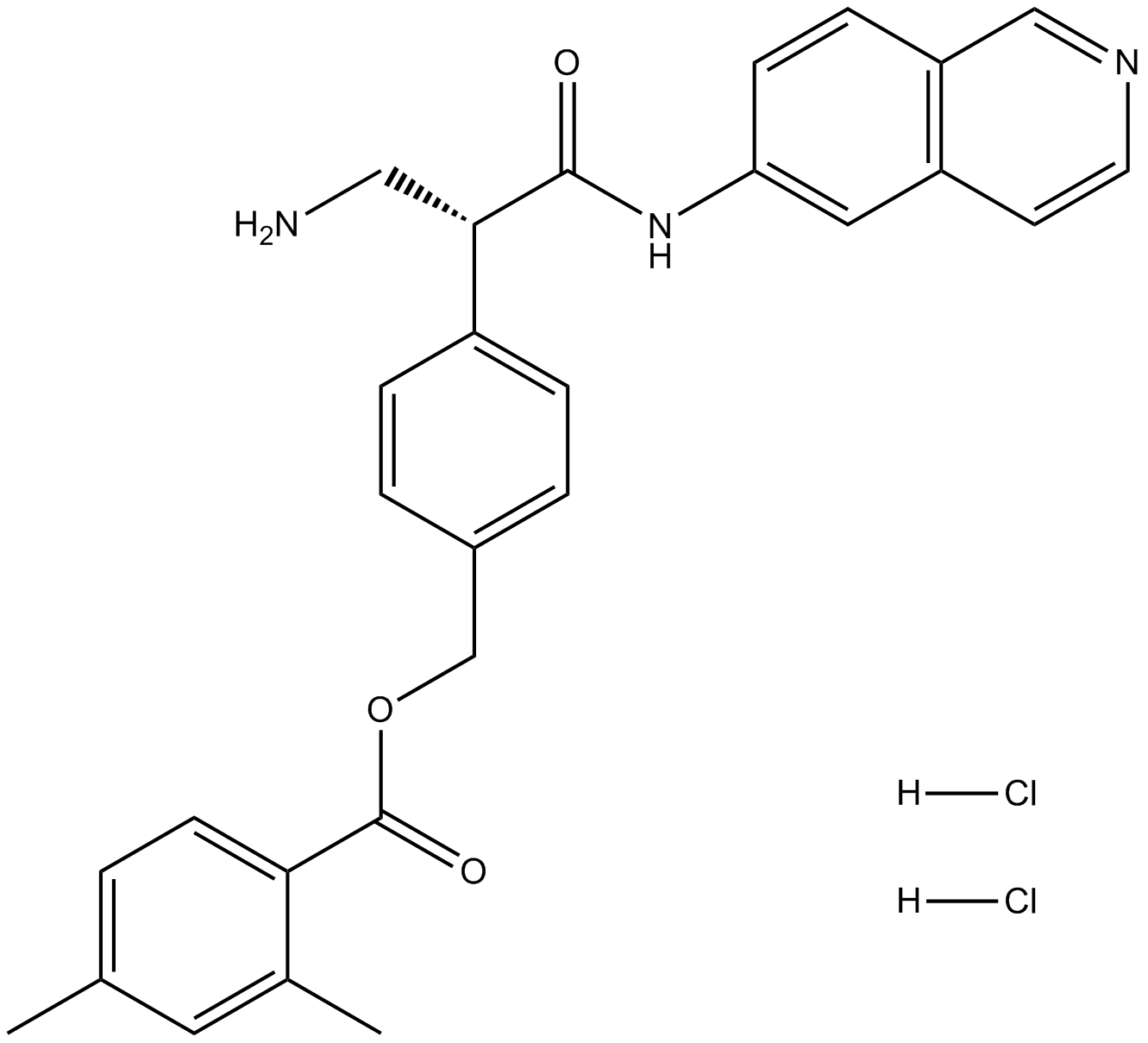 B7807 Netarsudil (AR-13324)Target: ROCKSummary: ROCK inhibitor
B7807 Netarsudil (AR-13324)Target: ROCKSummary: ROCK inhibitor -
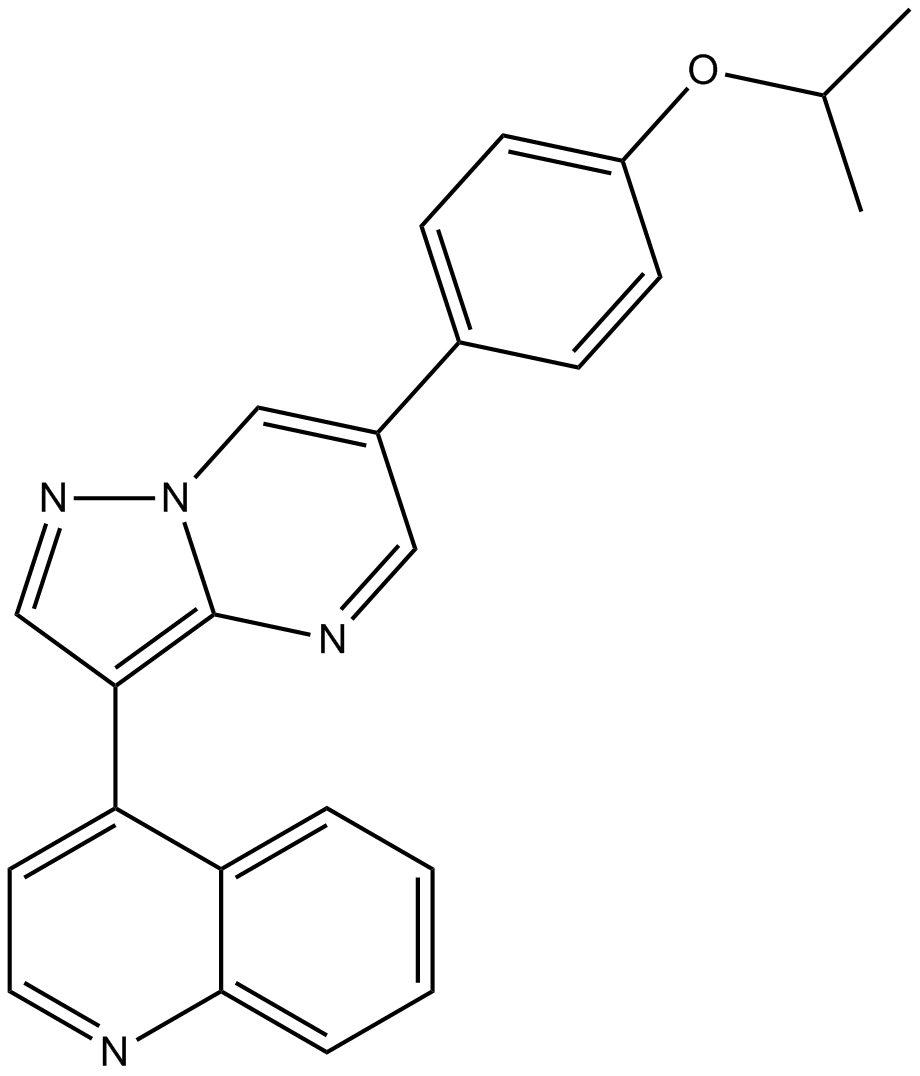 B3686 DMH-12 CitationTarget: BMP and Other Activin ReceptorsSummary: Selective BMP ALK2 receptor
B3686 DMH-12 CitationTarget: BMP and Other Activin ReceptorsSummary: Selective BMP ALK2 receptor -
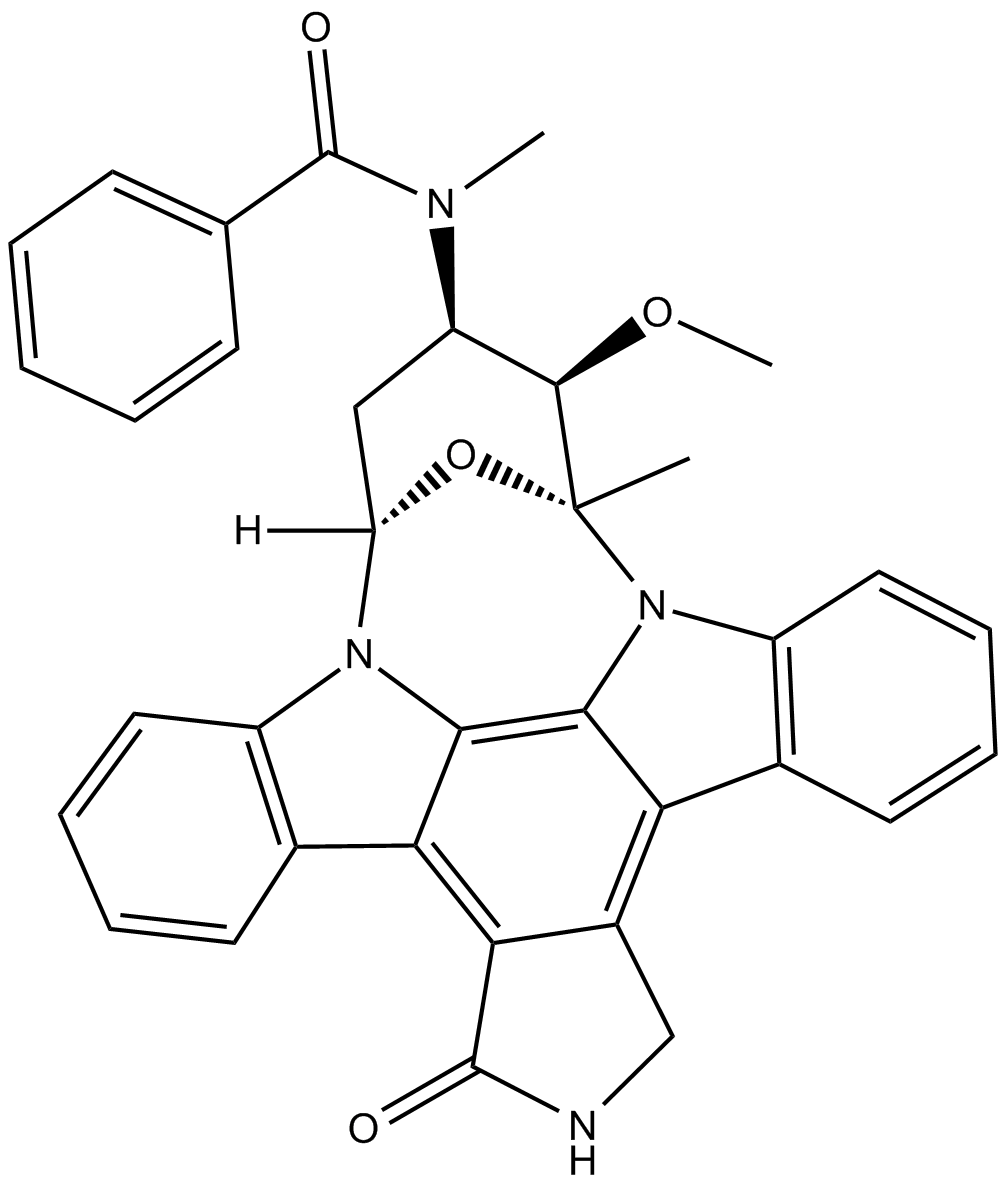 B3709 Midostaurin (PKC412)1 CitationTarget: PKC|PKA|KDR|Flk1|PPK|c-Syk|CDK1/CyclinBSummary: PKC inhibitor
B3709 Midostaurin (PKC412)1 CitationTarget: PKC|PKA|KDR|Flk1|PPK|c-Syk|CDK1/CyclinBSummary: PKC inhibitor -
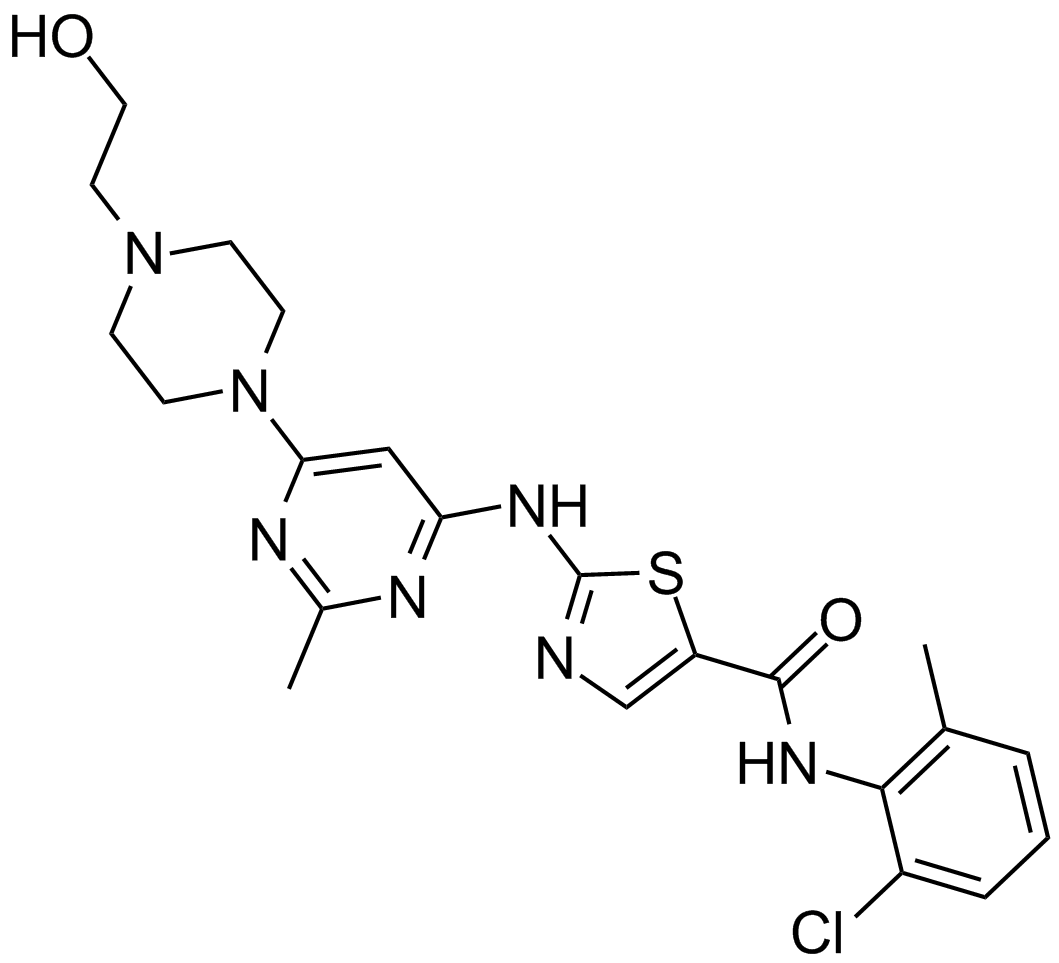 A3017 Dasatinib (BMS-354825)14 CitationSummary: Src and Bcr-Abl inhibitor
A3017 Dasatinib (BMS-354825)14 CitationSummary: Src and Bcr-Abl inhibitor


